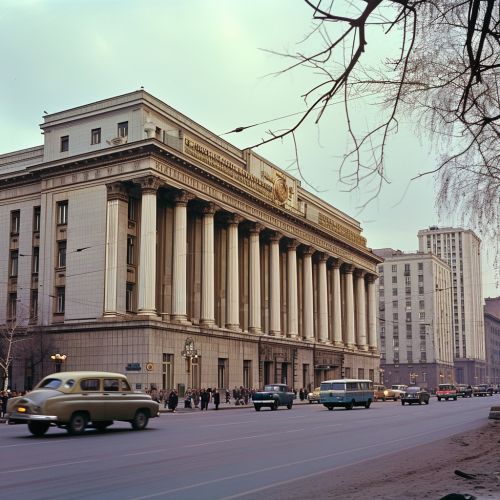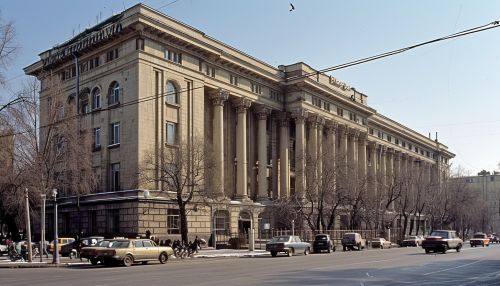State Bank of the USSR
History
The State Bank of the USSR (Gosbank) was the central bank of the Soviet Union. It was established in 1921, replacing the State Bank of the Russian Republic, and functioned until the dissolution of the Soviet Union in 1991. The bank was responsible for the monetary policy of the Soviet Union, controlling the money supply, issuing currency, and managing the country's gold and foreign exchange reserves.


The State Bank of the USSR was a state-owned institution, and its operations were governed by the laws of the Soviet Union and the regulations of the Soviet government. The bank was part of the larger Soviet economic system, which was characterized by state ownership of the means of production, central planning, and administrative pricing.
Structure and Functions
The State Bank of the USSR was organized in a hierarchical manner, with the central office in Moscow and branches throughout the Soviet Union. The central office was responsible for formulating and implementing monetary policy, while the branches carried out the bank's operations at the regional and local levels.
The bank's main functions were to control the money supply, issue currency, and manage the country's gold and foreign exchange reserves. It also provided banking services to state enterprises, government agencies, and individuals. These services included accepting deposits, making loans, and conducting foreign exchange transactions.
The State Bank of the USSR did not operate like a typical central bank in a market economy. In a market economy, the central bank uses monetary policy tools such as interest rates and open market operations to influence the money supply and the level of economic activity. In the Soviet Union, the State Bank controlled the money supply by directly managing the amount of money in circulation and the amount of credit provided to the economy.
Monetary Policy
The State Bank of the USSR played a key role in implementing the Soviet Union's monetary policy. The bank controlled the money supply by managing the amount of money in circulation and the amount of credit provided to the economy. This was done in accordance with the economic plans of the Soviet government.
The bank issued currency, known as the Soviet ruble, which was the only legal tender in the Soviet Union. The amount of currency in circulation was determined by the needs of the economy as assessed by the Soviet government and the State Planning Committee (Gosplan).
The bank also managed the country's gold and foreign exchange reserves. These reserves were used to support the value of the Soviet ruble and to finance international trade and financial transactions. The bank was responsible for maintaining the stability of the Soviet ruble and for preventing inflation.
Economic Role
The State Bank of the USSR played a central role in the Soviet economy. As the central bank, it was responsible for controlling the money supply and managing the country's gold and foreign exchange reserves. It also provided banking services to state enterprises, government agencies, and individuals.
The bank's role in the economy was closely tied to the Soviet Union's system of central planning. The bank was responsible for ensuring that the amount of money in circulation and the amount of credit provided to the economy were in line with the economic plans of the Soviet government and the State Planning Committee (Gosplan).
The bank also played a role in financing the Soviet Union's international trade. It managed the country's foreign exchange reserves and conducted foreign exchange transactions on behalf of the Soviet government and state enterprises.
Dissolution and Legacy
The State Bank of the USSR ceased to exist with the dissolution of the Soviet Union in 1991. Its functions were taken over by the central banks of the newly independent states that emerged from the Soviet Union. In Russia, the largest of these states, the State Bank's functions were assumed by the Central Bank of the Russian Federation.
The legacy of the State Bank of the USSR can be seen in the structure and functions of the central banks in the former Soviet states. These banks have inherited many of the State Bank's responsibilities, including controlling the money supply, issuing currency, and managing gold and foreign exchange reserves. However, they operate in market economies and use monetary policy tools that were not available to the State Bank of the USSR.
